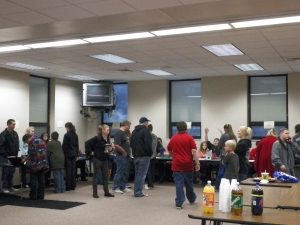One of my favorite things about teaching History is the projects one can do with students. This is one I did the beginning of the quarter which is a lot of fun.
For me, History is more than just names and dates–it is the story of the human experience, and as such, is relatable to everyone. I strive in my classroom to enable students to feel the feelings of those who have gone before us. Whatever the topic, whether through discussion or role play, I try to make my students “walk a mile in their shoes.”

Charters
One of my favorite projects is an approximately six week project I do involving colonization in America. Since I hated being assigned a group when I was in school, I always let my students choose their own groups. Before we get to the six week project, I do a smaller project where students have to work together to present one of the different Native American groups. I use that project to encourage my students to be creative (think outside the box) and let them experience group dynamics such as division of labor and which members you can count on. This way, when they choose groups for the six week project, they know whom they can trust.

Old New York
I begin the project with the selection of jobs. There are approximately 105 original settlers, and, as luck would have it, I had 105 students in my class. Additionally, Jamestowne (historic) offers a list of the occupations of the original settlers. The original jobs included a majority of gentlemen, a large number of laborers, and a smattering of craftsman. I gave my gentlemen a set salary, my laborers no salary, and my craftsmen got to roll for their salary (so many “heads” equal so many dollars.) Each member had to raise a certain amount of money to secure a ticket to the new world. Because laborers received no salary, they have to “indenture” themselves to other classmates who are gentlemen and can afford them. I occasionally take taxes from them (or fine them for misbehavior). Those who cannot pay their taxes are placed in “stocks.” There are so many societal dynamics taught in this period of the project.

Rhode Island
Once it is time to “Sail,” I took the class down to the football storage room. It is small, stinky, complete with barrels and a ladder where we could hang my Civil War kerosene lantern. There, by candle light, I had an alumni act as my “ship captain,” and between the two of us, we rehearsed what happened to the early settlers on the voyage, from the six week delay in the English Channel before they could get off to the problems with John Smith, who ended up spending a majority of the voyage in the brig for challenging the captain’s methods, to the Indian attack where two men were wounded the moment they arrived. Despite still being in the school, it lends a reality to the smell, the cramped quarters, and the experience.
When we return to class, each group selects one of the original 13 colonies that they will build. They are given a “plot of land” (white piece of paper) and a charter signed by their “proprietor.” Then, they have the next several weeks to create their colony. During that time, they will do research on their colony, create a travel brochure for their colony, create the rules by which the colony will operate, and build their colony.

History Fair 2012
It is always amazing for me to see the creativity and variety each group brings to the experience. I offer “supply ships” bringing items that may be purchased with any left over money from their initial salaries (all salaries stop in the new world.), but students may purchase or make their own supplies or used those provided by nature (rocks, sticks, etc.)
Finally, they are able to present their projects to the community in a history fair. We set up the projects and allow parents, teachers, and friends to come in and view all the projects. It is an incredible experience to say the least. Through the teamwork, the struggle, and the decisions, each student learns the decisions and challenges that faced our founding fathers. I think it’s a lesson they’ll never forget.
Read Full Post »




